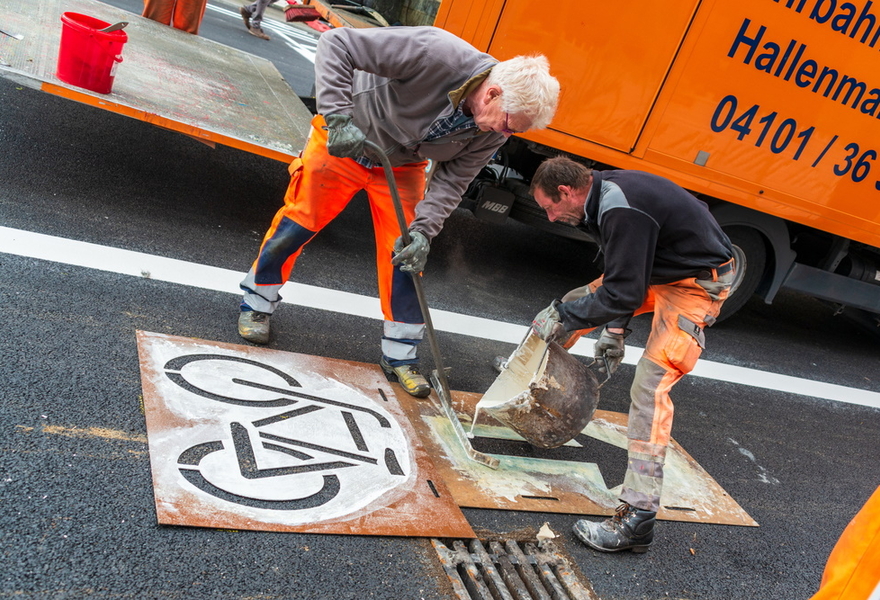Corona crisis lesson: additional bike lanes induce large increases in cycling
A quite simple climate policy instrument turns out to be successful and cost-effective. Drawing on data from 106 European cities, an MCC study documents the causality.

Pop-up bike lane: a little paint on the roadway is often sufficient for temporary marking. | Photo: Shutterstock/penofoto
Do investments in infrastructure lead to more sustainable, climate friendly transport behaviour or is it just expensive symbolic politics? This issue, which is often bitterly disputed in local parliaments, has been scientifically explored in a new study. The "pop-up bike lanes" created during the coronavirus pandemic serve as an experiment that can help us find out: a lane of the road or a parking lane is rededicated as a cycle lane using yellow lines or construction site beacons to provisionally redistribute street space. Scientists at the Berlin-based climate research institute MCC (Mercator Research Institute on Global Commons and Climate Change) analyse the effects of this policy. Their study has now been published in the renowned US journal Proceedings of the National Academy of Sciences.
The study uses data from 736 official bike counters in 106 European cities, as well as the European Cyclists' Federation’s “COVID-19 Cycling Measures Tracker”. Of course, the aim was to filter out causality: "It's clear that many people switched to cycling because of the coronavirus pandemic anyway to avoid crowds on public transport," says Sebastian Kraus, Policy Analyst at MCC and lead author of the study. "But we show that the new cycle lanes have themselves also generated a considerable level of additional cycling traffic." The cost of one kilometre of pop-up cycle lane, for example in Berlin, was as low as 9,500 euros. "The opportunity to significantly influence the modal mix here with little effort is being unjustly neglected in many cities."
The study compares the cities that have implemented pop-up bike lanes – on average 11.5 kilometres – with those that have not. In regression analyses, the research team controls for possible confounding factors, such as differences in the placement of bike counters, public transport facilities, population density, local preferences for "green lifestyles", topography, and weather. They come to the cautious conclusion, which takes into account statistical uncertainty: the pop-up bike lanes in themselves generated between 11 and 48 percent additional cycling in the period March to July 2020.
To illustrate the benefit of increased bicycle use not only with regard to the climate but also locally, the study combines this result with a rule of thumb metric from the public health literature: every kilometre cycled saves half a US dollar in health care costs. For those of the 106 cities examined that have created pop-up bike lanes, the overall health benefit would total more than a billion dollars a year, if the new cycling habits stick. "Whether cycling behaviour is sticky and whether the effect holds in non-pandemic times, could be the subject of further research," says Nicolas Koch, co-author of the study and head of the Policy Evaluation Lab at the MCC. "An empirical evaluation of effectiveness can be more productive than ideological debates about urban transport planning and climate policy that remain detached from evidence. Empirical data on mobility and health are becoming increasingly available – we need to use them to draw reliable conclusions about which measures really work."
Reference of the cited article:
Kraus, S., Koch, N., 2021, Provisional COVID-19 infrastructure induces large, rapid increases in cycling, Proceedings of the National Academy of Sciences
https://www.pnas.org/content/118/15/e2024399118





